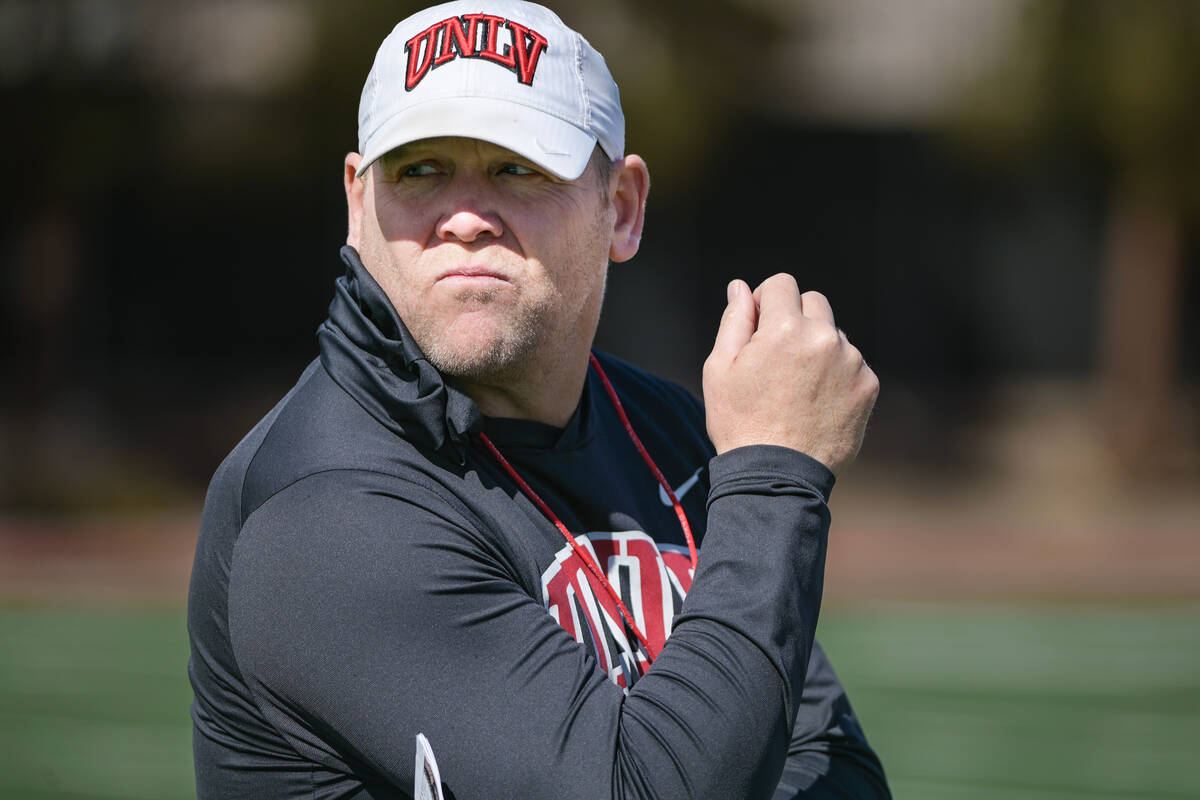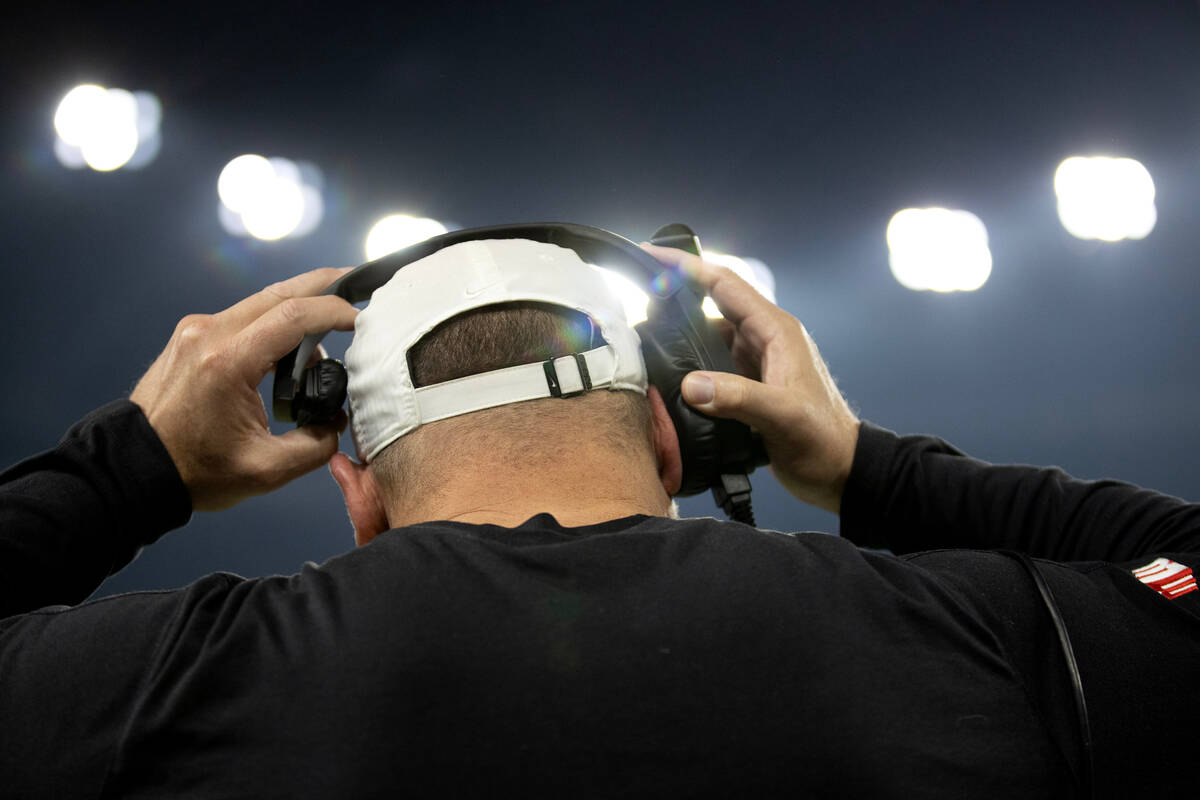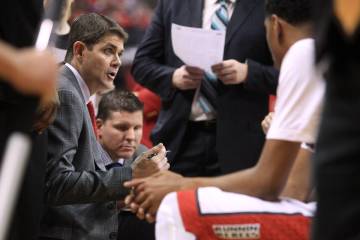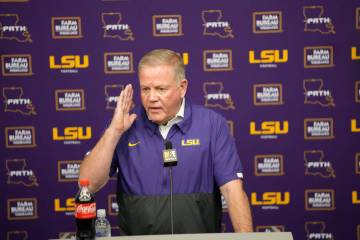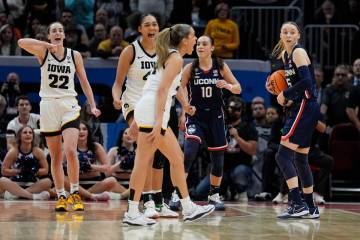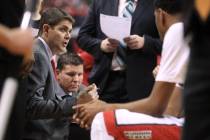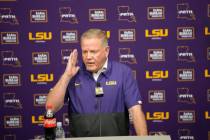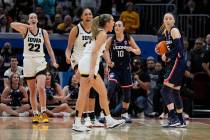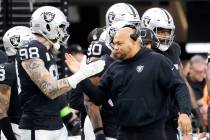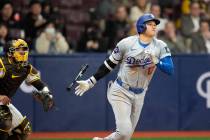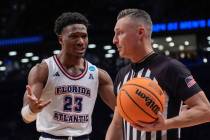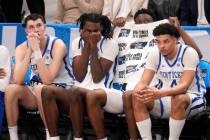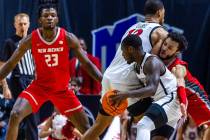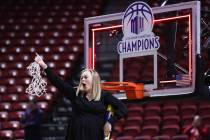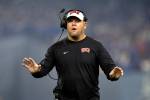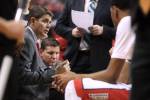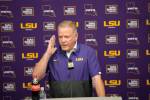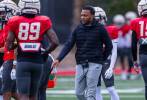Hill: UNLV football already looking to exploit new NCAA rules
One thing about me that will probably start to come through for regular readers of this space is that I am maybe — slightly, possibly? — just a little too obsessed with rules.
Whether it be sports at the highest level or game night with my friends, I’m that guy who needs to know every single detail and every parameter of the competition before it starts.
Does it take the fun out of things? Maybe for everyone else. But to me, a complete understanding of everything that is allowed and not allowed is what’s fun.
It also allows you to exploit every loophole, which is ultimately the best path to victory in almost any competition.
This is perhaps why when new rules are introduced and considered in sports at the highest level, my interest is always piqued.
‘Huge advantage’
College football is about to make some significant changes. The rules committee proposed allowing coaches to communicate with a player on the field until there are 15 seconds remaining on the play clock, the use of tablets on the sideline to view game action and the implementation of a two-minute warning in each half.
The NCAA Playing Rules Oversight Panel will vote on the proposal next month and is expected to approve the measures.
All of these things have been in place in the NFL for years, but the communication element has long been resisted, in part because of cost considerations and potential safety questions involved in the alteration of helmets.
But something changed. OK, allegations of sign stealing by Michigan changed.
By the way — and not just because I’m originally from Ann Arbor — sign stealing is part of the game. The lack of technology that led to teams using pictures of Disney characters and sports logos on giant flash cards on the sideline is really what should have led to this rule change long ago.
Anyway.
UNLV did not utilize technology for play-calling as it opened spring practice Saturday, but the planning is already underway. Coach Barry Odom said as soon as there is clarity on what will be available in games, the program will purchase the equipment to get everyone up to speed.
“I don’t want to do something today that isn’t real,” he said. “As soon as we get it ironed out, we’ll get it put in place here.”
He knows the teams that most quickly adapt to the changes will have a competitive edge, and Odom is not one to let that kind of opportunity get away. Plus, he saw this coming.
“I spent a lot of time with NFL staffs this offseason learning what that looks like for them, and I think we’re in a good place on how we’re going to utilize it,” he said. “I think it will be a huge advantage for us, and I think it’s a good thing for college football and the fans will see a better product because of it.”
Odom said the teams that best use it will be the ones who can quickly communicate in a timely manner without overloading players with information. What he didn’t say is the quicker you get lined up, the more time you will have to communicate with the quarterback at the line of scrimmage after the defense is set.
Would it be possible to get lined up, then intentionally call a play to the quarterback at 18 seconds so the offense can take advantage of how the defense is lined up and do it at just the time the defensive team has its headset communication cut off, then snap the ball before manual signals can be relayed from the sideline?
It’s certainly worth exploring. Teams will find ways to best make use of the new rules, and the ones that do it best will have that slight advantage, which is always the goal when evaluating new rules.
Two-minute testing
The Rebels also have the advantage of being one of the few teams that have some experience in this realm. Their bowl game against Kansas was one of the experimental games the NCAA used as a test market.
Odom said it was a great head start for his team to get used to those things, but he and his staff have their eyes on another of the new rules.
“The one that will take lots of conversation and work in practice is the NFL model on the two-minute timeout,” he said.
The recommendation was made by the committee Friday. By Friday night, Odom and his staff were already meeting to figure out how to adjust. They didn’t have to look far for a real-life example.
Odom said the coaches were able to rehash their use of timeouts to try to get the ball back in the final minutes of the San Jose State game and how they could have managed the clock differently with a two-minute warning in place.
You may see this as minutiae. I see it as the reason I love sports.
And why the UNLV football program is going to be just fine as long as Odom is in charge.
Contact Adam Hill at ahill@reviewjournal.com. Follow @AdamHillLVRJ on X.



